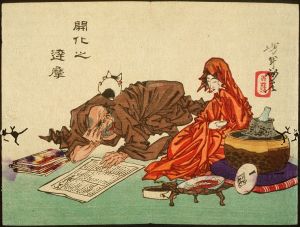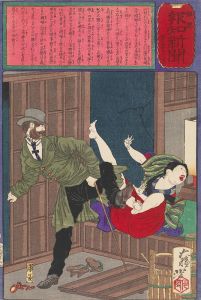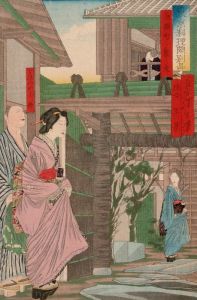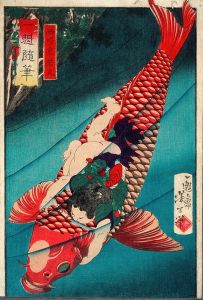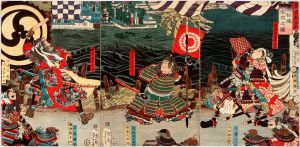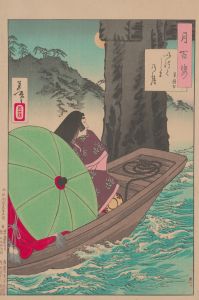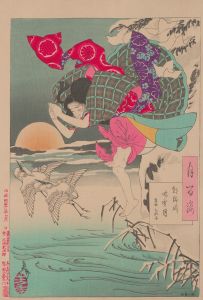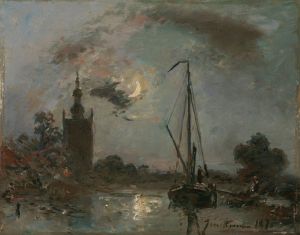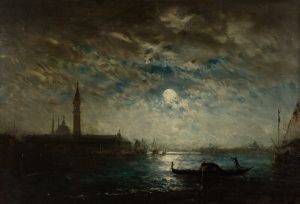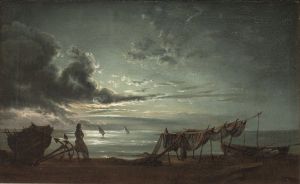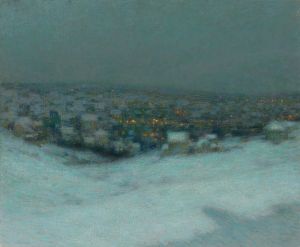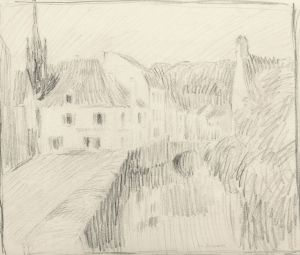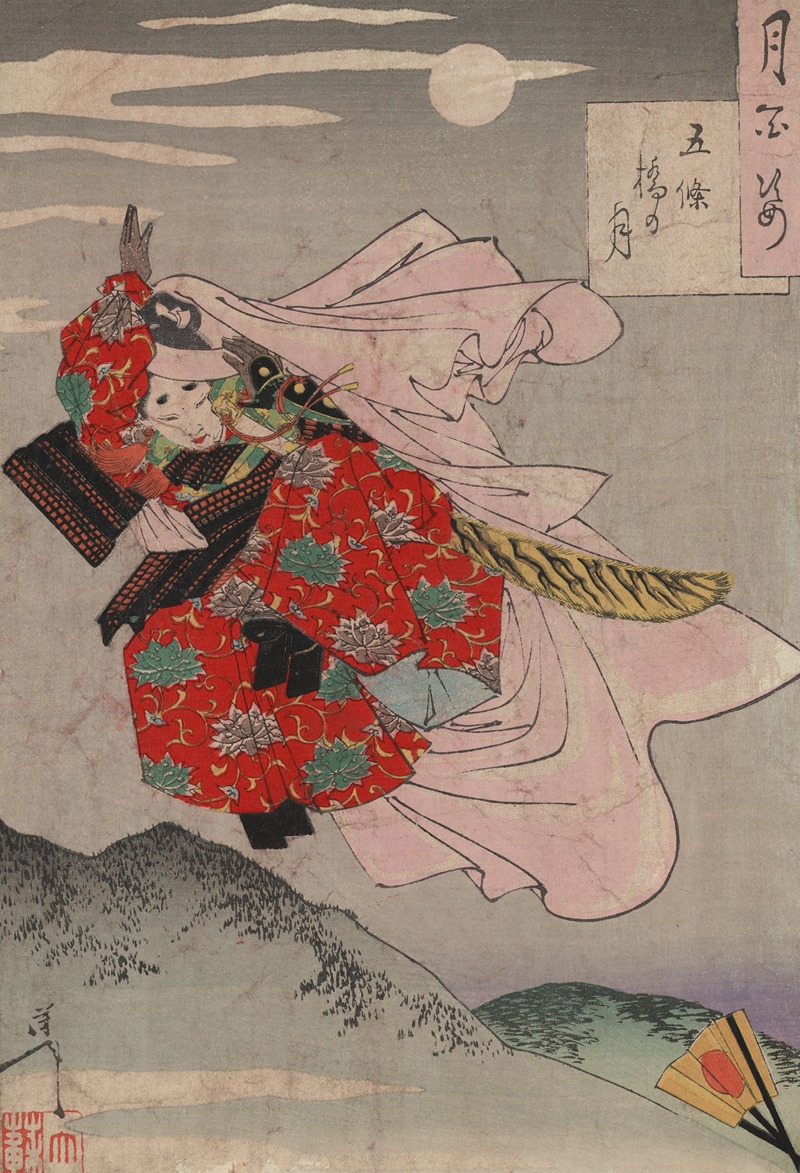
Gojōbashi no tsuki
A hand-painted replica of Tsukioka Yoshitoshi’s masterpiece Gojōbashi no tsuki, meticulously crafted by professional artists to capture the true essence of the original. Each piece is created with museum-quality canvas and rare mineral pigments, carefully painted by experienced artists with delicate brushstrokes and rich, layered colors to perfectly recreate the texture of the original artwork. Unlike machine-printed reproductions, this hand-painted version brings the painting to life, infused with the artist’s emotions and skill in every stroke. Whether for personal collection or home decoration, it instantly elevates the artistic atmosphere of any space.
Tsukioka Yoshitoshi (1839–1892) was a prominent Japanese ukiyo-e artist known for his innovative and dramatic woodblock prints, particularly during the late Edo and early Meiji periods. Among his many works, "Gojōbashi no tsuki" (Moon at Gojō Bridge) is one of the prints from his celebrated series "Tsuki hyakushi" (One Hundred Aspects of the Moon), which was published between 1885 and 1892. This series is widely regarded as one of Yoshitoshi's masterpieces, showcasing his artistic maturity and his ability to blend traditional Japanese themes with modern influences.
"Gojōbashi no tsuki" depicts a scene inspired by Japanese folklore and historical tales. The print illustrates the legendary encounter between the warrior monk Benkei and the young hero Minamoto no Yoshitsune (also known as Ushiwakamaru) on Kyoto's Gojō Bridge. According to the story, Benkei, a formidable figure who sought to collect 1,000 swords from defeated opponents, challenged Yoshitsune to a duel. Despite Benkei's strength and size, Yoshitsune, known for his agility and skill, defeated him. This encounter led to a deep bond between the two, with Benkei becoming Yoshitsune's loyal retainer.
In Yoshitoshi's depiction, the moonlight plays a central role, casting an ethereal glow over the scene and emphasizing the dramatic tension of the moment. The composition reflects Yoshitoshi's mastery of light and shadow, as well as his ability to convey emotion and movement. The print captures the dynamic energy of the duel, with Yoshitsune's nimble figure contrasting against Benkei's imposing presence. The moon, a recurring motif in the "Tsuki hyakushi" series, symbolizes not only the passage of time but also the enduring nature of these legendary tales.
Yoshitoshi's "Tsuki hyakushi" series was created during a period of significant cultural and social change in Japan, as the country transitioned from the feudal Edo period to the modern Meiji era. His works often reflect a blend of traditional Japanese aesthetics and the influence of Western art, which was becoming increasingly prevalent during this time. "Gojōbashi no tsuki" exemplifies Yoshitoshi's ability to preserve the essence of Japanese folklore while incorporating innovative artistic techniques.
Today, "Gojōbashi no tsuki" is considered a significant example of Yoshitoshi's contribution to the ukiyo-e tradition and his role in revitalizing the art form during its decline in the late 19th century. The print, like others in the "Tsuki hyakushi" series, continues to be celebrated for its artistic excellence and its ability to convey timeless stories through the medium of woodblock printing.





